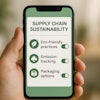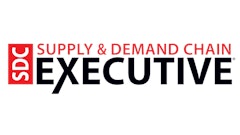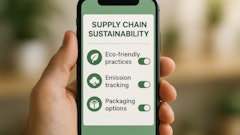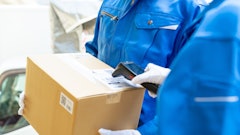
Seven years ago, ALAN (American Logistics Aid Network) created a lighthearted, alphabetical guide to disaster response.
Nearly 87 months later, there’s been dozens of devasting disasters and $3.6 billion dollars’ worth of FEMA budget cuts.
However, there’s still a need to spell out what smart supply chain disaster planning and response should look like.
Here’s an A to (almost) Z take on some of today’s most essential disaster management tools and what they might mean for your company and its disaster readiness in the wake of this challenging new normal.
All hazards planning
Although risk-informed disaster planning has been getting more recent press, this alternative approach remains viable for many private organizations, because it assumes – quite rightfully -- that you’ll experience the same types of business continuity challenges regardless of the kind of disaster you’re dealing with. Don’t be afraid to use it for planning just because it’s not the flavor of the month.
Being at least a little afraid and preparing accordingly
If you think your organization has been marked safe from preparing for disasters because of its previously uneventful disaster history, think again. Hurricane Helene’s impact on Asheville, N.C., served as a reminder that storm damages and supply chain disruptions aren’t just a coastal phenomenon. The Lahaina, Hawaii, disaster showed that you don’t need to be located near a forest to experience a devastating fire.
Collaboration
There’s no room for holding back or looking out for No. 1 in today’s disaster relief ecosystem. Finding a way to get communities back on their feet in the wake of this year’s reduced funding will require unprecedented levels of teamwork and cooperation across the public and private sectors and among organizations that are usually competitors.
Data maps
Data maps are detailed tools that often spell out the difference between guessing about gaps in a local area’s supply chain disaster readiness efforts and accurately identifying where vulnerabilities and opportunities truly exist.
Exploratory exercises
Whether it’s a supply chain disaster simulation game or more detailed tabletop exercise, your company will always come away with some important preparation takeaways when you take the time to hypothetically walk through a potential catastrophe, especially if you involve multiple stakeholders.
Fending for your own
As local and state officials struggle to navigate their many increased disaster management responsibilities, it’s possible that some forms of government disaster relief won’t be as tightly organized or readily available, at least in the short term. Because of that, make sure your company’s contingency plans include ample and additional provisions for assisting employees affected by a disaster in the coming year. They’ll likely be needed.
Guanxi
This Chinese word is ideal for mutually beneficial networks and relationships and what it means for disaster relief. By forging strong ties with members of local disaster ecosystems (including area non-profits, emergency management organizations and other civic-minded local businesses) now, you’ll contribute to the whole community approach that will be so beneficial for faster response, relief and recovery later.
Heightening awareness
Although emergency management officials (who often determine which roads get cleared first after a disaster) understand why it’s important to support the post-disaster continuity of places like hospitals and fire stations, they’re often less acquainted with the importance of food and grocery facilities. Help ensure that the routes to your stores and distribution centers get in the queue to be cleared sooner by providing these professionals with some important “food for thought” about just how essential your operations truly are.
Intelligence
Don’t struggle with limited post-disaster information if you don’t have to. Your company can make the logistics of reaching disaster-affected communities easier by signing up to receive free updates about the status of a disaster area’s transportation networks, fuel availability, curfews and re-entry procedures.
Joining up
Professional organizations are an excellent place to begin your search for potential collaborative partners for disaster preparation and response network. Just as important, they’re often great about preparing and sharing key disaster preparation and response information with their memberships or passing along critical disaster updates from organizations.
Keeping unnecessary materials out of disaster zones
If you want to help rather than hinder any future community relief efforts, avoid the temptation to “fill a truck” with donations. Keep roadways and distribution channels clear for rescue and first response efforts. And consider sending cash or in-kind service offers instead.
Lending your voice for greater multi-state cooperation
One of the common themes has been the need for more geographically flexible regulatory waivers during disaster. Every story helps organizations advocate better.
Meeting regularly with members of your collaborative disaster “village”
Don’t wait until disasters hit to get acquainted with your collaborative supply chain disaster group’s members. Begin meeting with them ASAP and hosting team-building meetings regularly. It will pave the way for a far more coordinated response when things get dire.
Negotiating reciprocal agreements
Even if your facilities don’t sustain any disaster damage, it’s highly possible that they’ll still be hampered by power or connectivity issues. Consider establishing a back-up network of other companies’ warehouses and communications centers willing to temporarily help out if that happens and offering to serve as a backup for these same companies if their operations are affected.
Opting back in for real-time alerts
If you’ve disabled the wireless emergency alert (WEA) feature on your phone, please re-enable it now and encourage all of your supply chain employees to do the same. While you may have previously found this feature to be more bothersome than useful, it’s there to provide instant warnings about potentially life-threatening situations. Simply put, it could save your life.
Pre-offers
One of the most valuable ways you can help disaster response organizations (besides providing financial support) is by sharing your company’s material handling equipment, warehouse space, transportation and logistics expertise.
Quitting time
Good disaster planning includes doing everything you can to keep employees out of harm’s way. If you have operations located in a disaster’s path, make sure you give the personnel who work in those locations ample time to prepare, shelter in place or evacuate as needed, even if it means closing those operations early or telling employees not to report to work.
Risk-informed approach
An alternative to all hazards, this disaster planning approach has been gaining popularity in recent months while more non-profit and government organizations have struggled to do more with less. Its methodology is based on the likelihood of certain events occurring in a particular area, which ultimately allows organizations to tailor their planning efforts toward only those disasters’ most likely outcomes. Both planning methods have their merits; use the one that feels like the best fit for you and your organization.
Supply Chain Intelligence Center
Launched by ALAN in 2020, this free dashboard helps you keep up with disasters and their supply chain impacts, including the status of roads, ports and airports.
To be continued . . .
There are many more terms and best practices, including Targeting demand, Using some the many disaster planning resources available at https://www.ready.gov/, Volunteering to work at pop-up warehouses (where many people aren’t as well versed in logistics as you are), and heeding all advance Warnings.
At a time when we’ve been told to eXpect less from the federal government in terms of disaster assistance, it’s imperative for the entire supply chain industry to step up their game, check logos and egos at the door and do a better job of working together for the sake of all disaster survivors.
Times may indeed feel tenuous. But You’ll always have a friend in us -- and each other.




















